Planning the perfect lesson for elementary music class can be a challenge. Trying to strike the balance between fun and content-filled music lessons is a never ending battle for all music teachers! You want your students to learn musical standards, but you don’t want lessons so dry that they resemble the droning teacher from Ferris Bueller.

But sometimes teachers then steer so far into FUN that you can barely draw the line to any content standard at all.
Now don’t get me wrong. I am not here to be the fun police. I encourage as much fun as possible in music class. And yes, there will be some activities that are more for fun than for content. But I would argue that they shouldn’t be the meat of your lesson, but rather the dessert.
So how do you serve a delicious “main course” in your music lessons? Well, that’s what I’m going to show you today!
What is the Objective of Your Music Lesson?
Whenever you plan a music lesson, it should start with knowing the objective. How can you teach something if you don’t know what you are trying to teach?
Your lesson objective is the backbone on which you will build the rest of your lesson.
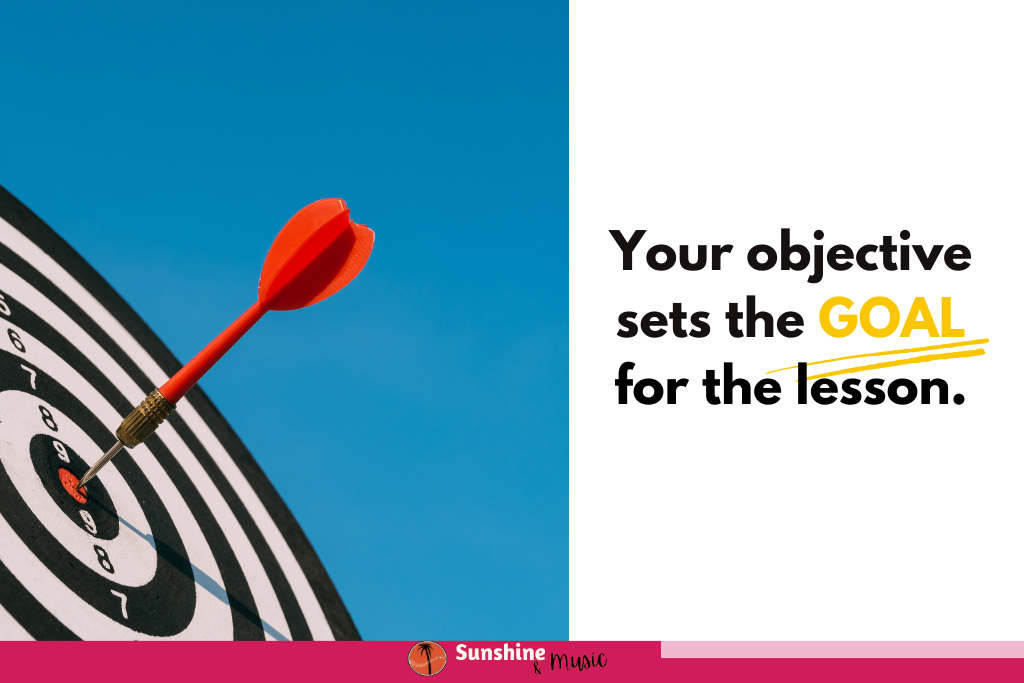
But how do you know what to pick for a lesson objective? Well, your objectives should really come from your state standards. Not sure what your state standards are? Check out my blog post National Standards in Music: A State By State Breakdown that has links to blog posts from every state!
Sometimes your lessons will even cover multiple objectives, but don’t get too carried away! Depending on the length of your lesson, I wouldn’t try to tackle more than three in one class. Usually, I just stick to one.
Once you know what your main objective is it’s time to add it into a fun lesson so the kids barely know that they’re learning!
Usually, when I’m teaching a new concept, I will have a mix of fun activities and focused learning. This time is usually a little bit more dry and just involves me explaining the new concept. But then I would say 80% of my lessons or more are focused on putting those concepts into action through fun activities.
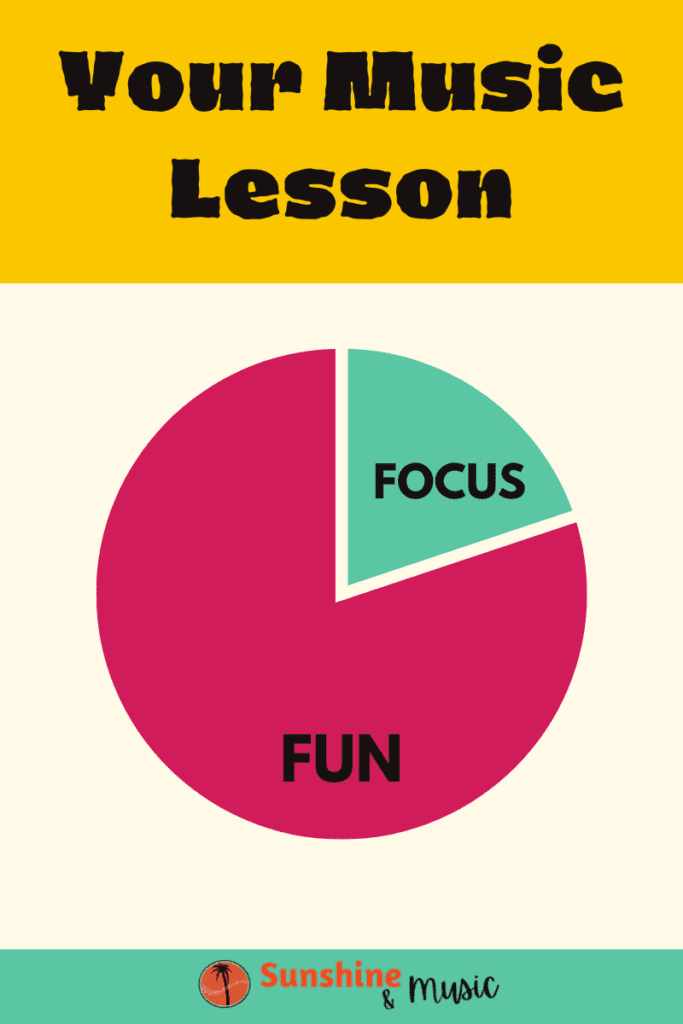
For example, if we were learning about 16th notes, I would probably take about five minutes at the board to explain what a 16th note is and have students read a couple rhythms with 16th notes in them. But then the rest of the lesson would be about highlighting 16th notes through music, movement and creation.
How to add fun into your elementary music class
Movement
Movement is a great way to bring fun into your lesson. Whether it is moving to the beat or pretending to be animals, there are so many ways to experience music through movement.
Games
Games are always a good way to add fun into your class. Bean Bag passing games. Composer fact trivia games. Guess the instrument games. You can make anything into a game!
Partner Work
Kids LOVE to get to work with their peers. This can be a great way to practice new skills. Have one say a rhythm and the other writes it down. Have them create a melody together. Or listen and describe a song. Everything feels a little more doable (and fun) with the support of a partner.
Coloring
Yes. Coloring can be educational! Check out listening glyphs like this one here. You could also have students draw a picture to show how a song makes them feel.

Creativity
Giving students the chance to create adds a sense of novelty and ownership in your elementary music class. They can create movement ideas. Or So-Mi patterns. Or a whole song! Whatever fits within your lesson objective.
Still feel like you could use a little support figuring out your lessons? Grab this free workbook!
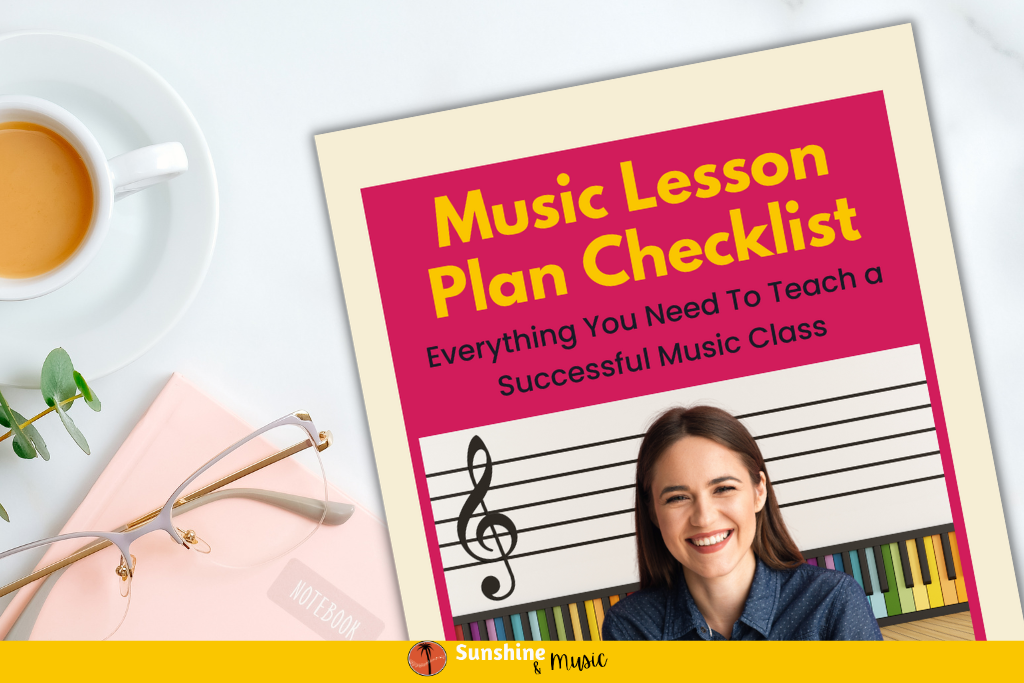
Examples of purposeful elementary music lessons
Teaching Voice types
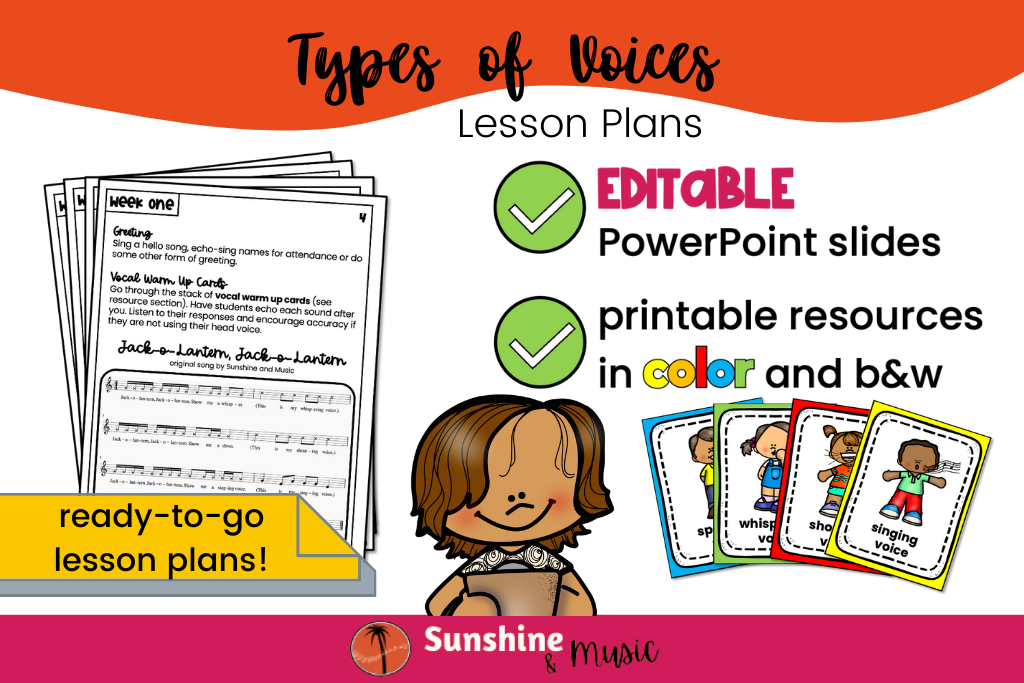
The main focus of this lesson is teaching students about different types of voices (singing, speaking, whispering and shouting). It includes children’s literature focused on voices, puppets using voices, songs using different voices and lots more.
Instruments of the Orchestra
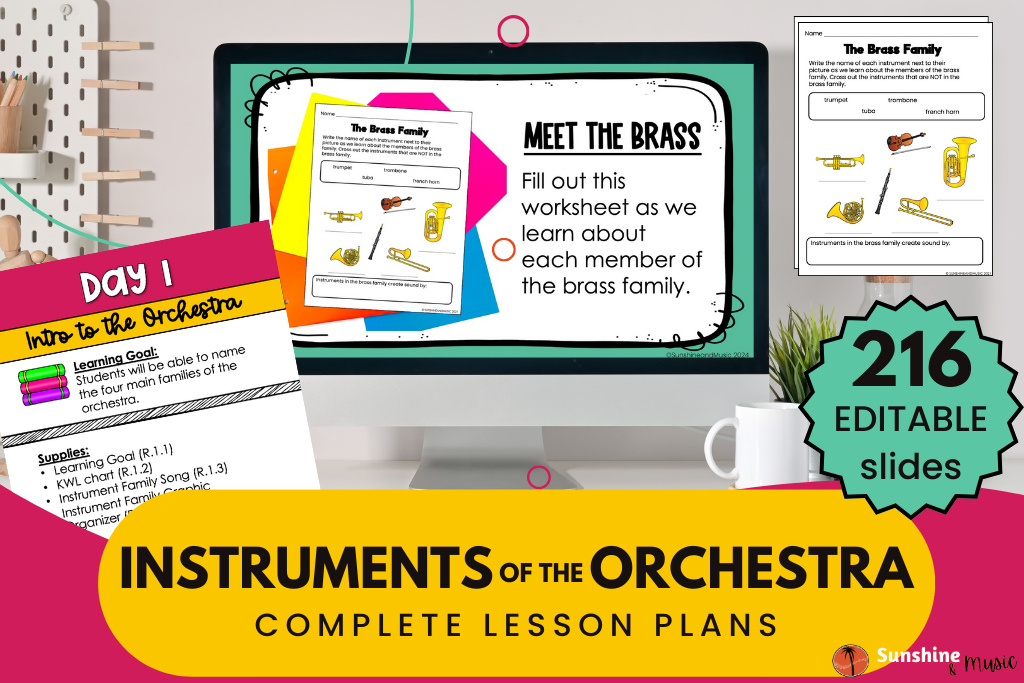
This unit focuses on the instrument families of the orchestra. I have a song to remember the instrument families. We do movement to recordings highlighting the different instrument families. It has activities with partners, creativity and a board game. But all the fun ties back to instrument families.
Hopefully this helps you get some ideas on how to teach music lessons that are content rich but full of fun!
And if you are still looking for more, don’t forget to grab this free workbook.

Want More Details About Planning Your Content?
Try this YouTube video that breaks Lesson Planning for Music down into three simple steps!

More Elementary Music Blog Posts For You:
Books for Music Class: How To Use Children’s Literature in Elementary Music






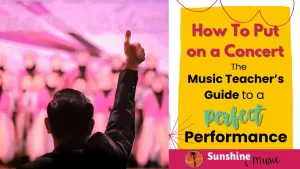

2 Responses